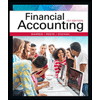
Income Statement:
It is a financial statement that shows the
Statement of
It is a financial statement that shows the amount of profit retained by the company for future unforeseen events.
The balance sheet concludes the assets invested in by the company as well as reports the liabilities and equity taken up, thus, showing the economic or financial status of the company.
Closing entries:
These entries are made for those items whose balance needs to be zero for the next accounting period otherwise data from two accounting periods will get mixed with each other and we only want to see the data of one accounting period in it.
Return on asset:
It tells us how much the company is earning from the total amount of assets it has. It is determined by dividing net income from total average assets into percentage terms.
Debt ratio:
It shows how much of the company’s assets are bought using debt capital. The higher the debt ratio higher the financial risk, lower the debt ratio lower the financial risk. it comes after dividing debt capital by total assets.
Profit margin ratio:
It shows how much the company is earning for every dollar of its revenue. It comes after dividing net sales from revenue into percentage terms.
It shows whether the company will be able to pay its current liabilities out of its current asset or not. It comes after dividing current liabilities by current assets.
1.
To prepare: Income statement, statement of retained earnings, and classified balance sheet.
2.
To prepare:
3.
a.
Return on assets ratio.
b.
Debt ratio.
c.
Profit margin ratio.
d.
Current ratio.
Want to see the full answer?
Check out a sample textbook solution
Chapter 3 Solutions
FINANCIAL & MANAGERIAL ACCOUNTING (LL)(W
- A trial balance will balance even if A. a journal entry to record the purchase of equipment for cash of $52100 is not posted. B. a $13100 cash dividend is debited to dividends for $13100 and credited to cash for $1310. C. a $510 collection on accounts receivable is credited to accounts receivable for $510 without a corresponding debit. D. a purchase of supplies for $595 on account is debited to supplies for $595 and credited to accounts payable for $559.arrow_forwardEquipment costing $15200 is purchased by paying $3800 cash and signing a note payable for the remainder. The journal entry to record this transaction should include a credit to Notes Payable. credit to Notes Receivable. credit to Equipment. debit to Cash.arrow_forwardAt December 1, 2025, a company's Accounts Receivable balance was $20160. During December, the company had credit sales of $54000 and collected accounts receivable of $43200. At December 31, 2025, the Accounts Receivable balance is A. $30960 debit. B. $30960 credit. C. $74160 debit. D. $20160 debit.arrow_forward
- Whispering Winds Corp.'s trial balance at the end of its first month of operations reported the following accounts and amounts with normal balances: Cash $14720 Prepaid insurance 460 Accounts receivable 2300 Accounts payable 1840 Notes payable 2760 Common stock 4600 Dividends 460 Revenues 20240 Expenses 11500 Total credits on Whispering Winds Corp's trial balance are A. $28980. B. $30360. C. $29900. D. $29440arrow_forwardSwifty Corporation's trial balance reported the following normal balances at the end of its first year: Cash $14440 Prepaid insurance 530 Accounts receivable 2660 Accounts payable 2130 Notes payable 3190 Common stock 4100 Dividends 530 Revenues 22040 Expenses 13300 What amount did Swifty Corporation's trial balance show as total credits? A. $31460 B. $32520 C. $30930 D. $31990arrow_forwardMonty Inc., a major retailer of high-end office furniture, operates several stores and is a publicly traded company. The company is currently preparing its statement of cash flows. The comparative statement of financial position and income statement for Monty as at May 31, 2020, are as The following is additional information about transactions during the year ended May 31, 2020 for Monty Inc., which follows IFRS. Plant assets costing $69,000 were purchased by paying $47,000 in cash and issuing 5,000 common shares. In order to supplement its cash, Monty issued 4,000 additional common shares. Cash dividends of $35,000 were declered and paid at the end of the fiscal year. create direct method cash flow statement, show your workarrow_forward
- Following is additional information about transactiona during the year ended May 31, 2020 for Monty Inc., which follows IFRS. Plant assets costing $69,000 were purchased by paying $47,000 in cash and issuing 5,000 common shares. In order to supplement iRs cash, Monty Issued 4,000 additional common shares. Cash dividends of $35,000 were declared and paid at the end of the fiscal year. PRepare a direct Method Cash FLow using the format.arrow_forwardmake a trail balancearrow_forwardOn July 31, 2025, the general ledger of Cullumber Legal Services Inc. showed the following balances: Cash $4,960, Accounts Receivable $1,860, Supplies $620, Equipment $6,200, Accounts Payable $5,080, Common Stock $4,340, and Retained Earnings $4,220. During August, the following transactions occurred. Aug. 3 5 Collected $1,490 of accounts receivable due from customers. Received $1,610 cash for issuing common stock to new investors. 6 Paid $3,350 cash on accounts payable. 7 Performed legal services of $8,060, of which $3,720 was collected in cash and the remainder was due on account. 2 2 2 2 2 12 Purchased additional equipment for $1,490, paying $500 in cash and the balance on account. 14 Paid salaries $4,340, rent $1,120, and advertising expenses $340 for the month of August. 18 20 24 26 27 Collected the balance for the services performed on August 7. Paid cash dividend of $620 to stockholders. Billed a client $1,240 for legal services performed. Received $2,480 from Laurentian Bank;…arrow_forward
 EBK CONTEMPORARY FINANCIAL MANAGEMENTFinanceISBN:9781337514835Author:MOYERPublisher:CENGAGE LEARNING - CONSIGNMENT
EBK CONTEMPORARY FINANCIAL MANAGEMENTFinanceISBN:9781337514835Author:MOYERPublisher:CENGAGE LEARNING - CONSIGNMENT Financial AccountingAccountingISBN:9781337272124Author:Carl Warren, James M. Reeve, Jonathan DuchacPublisher:Cengage Learning
Financial AccountingAccountingISBN:9781337272124Author:Carl Warren, James M. Reeve, Jonathan DuchacPublisher:Cengage Learning Managerial Accounting: The Cornerstone of Busines...AccountingISBN:9781337115773Author:Maryanne M. Mowen, Don R. Hansen, Dan L. HeitgerPublisher:Cengage Learning
Managerial Accounting: The Cornerstone of Busines...AccountingISBN:9781337115773Author:Maryanne M. Mowen, Don R. Hansen, Dan L. HeitgerPublisher:Cengage Learning


